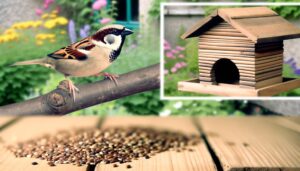10 Steps to Successfully Incubate Sparrow Eggs at Home
To incubate sparrow eggs at home, first, choose an incubator with precise temperature control, an automatic egg turner, and effective ventilation. Set it on a stable surface, maintain cleanliness, and calibrate the built-in hygrometers and thermometers.
Keep a temperature of 37.5°C, with humidity at 45-50% initially, increasing to 65% near hatching. Turn the eggs every two to four hours, using either automatic mechanisms or manual handling.
After hatching, keep hatchlings at 95-97°F, gradually decreasing temperature weekly while maintaining humidity. Provision a protein-rich diet regularly to support development.
Further insights on optimizing incubation conditions are within reach.
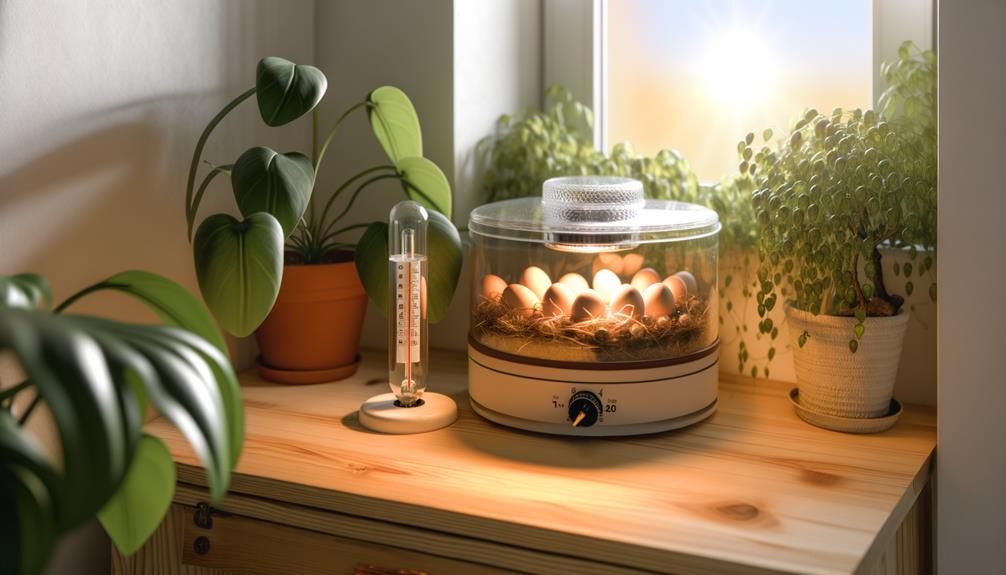
Key Takeaways
- Use an incubator with precise temperature and humidity control.
- Maintain the temperature at 37.5°C and humidity at 45-50%.
- Turn the eggs every two to four hours to prevent sticking.
- Increase humidity to 65% during the final days before hatching.
- Ensure the incubator is clean, stable, and connected to a reliable power source.
Choosing the Right Equipment
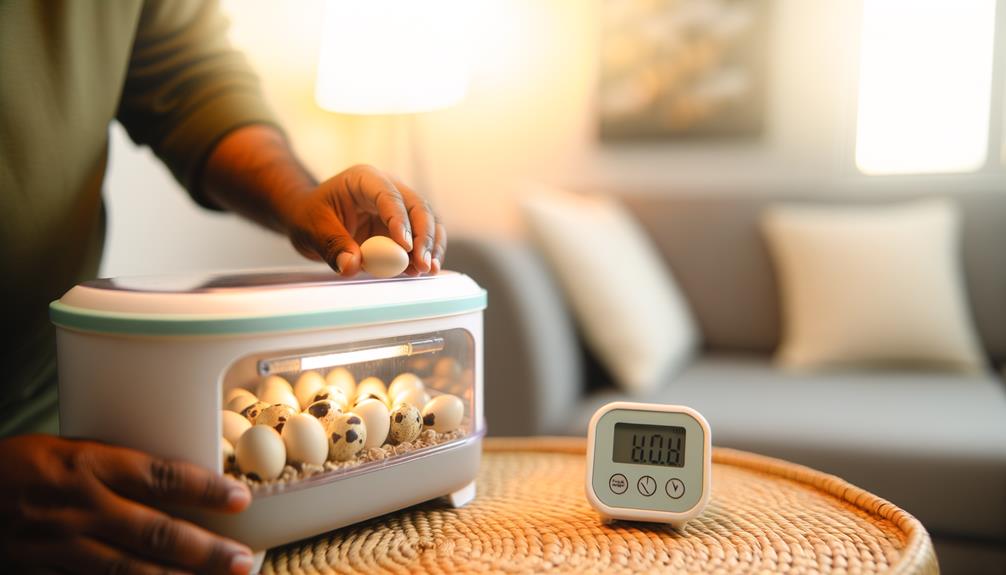
Selecting the right equipment for incubating sparrow eggs is necessary to ensure ideal conditions for embryo development and successful hatching. The choice of incubator must consider precise temperature and humidity control, as sparrow eggs require a stable environment of approximately 37.5°C and 50-55% humidity.
Advanced models with digital thermostats provide superior accuracy, minimizing temperature fluctuations. Additionally, an automatic egg turner is essential, as it mimics the natural turning process performed by the parent birds, preventing embryo adhesion to the eggshell.
Ventilation systems should also be considered, ensuring adequate oxygen levels while expelling excess carbon dioxide. Lastly, quality hygrometers and thermometers are necessary for continuous monitoring, ensuring optimal conditions are maintained throughout the incubation period.
Setting Up the Incubator
Once the appropriate equipment has been chosen, the next step involves carefully setting up the incubator to create the most favorable environment for sparrow egg incubation.
Begin by placing the incubator on a stable, vibration-free surface away from direct sunlight or drafts. Confirm the incubator is clean and sanitized to prevent bacterial contamination.
Insert the water reservoir and fill it according to the manufacturer's instructions to support humidity control. Install the egg tray, ensuring it is properly aligned and secure.
Connect the incubator to a reliable power source, and calibrate the built-in thermometer and hygrometer to guarantee accurate readings.
Program the incubator settings for ideal conditions, keeping in mind the specific requirements for sparrow eggs.
Maintaining Temperature and Humidity
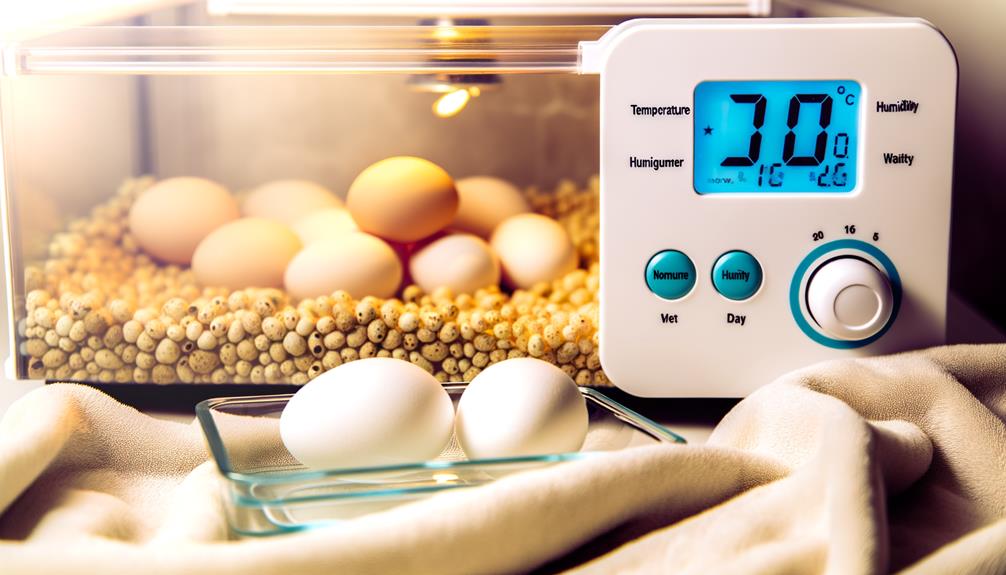
Maintaining precise temperature and humidity levels within the incubator is crucial to guarantee the healthy development of sparrow embryos. The ideal temperature for incubating sparrow eggs is around 37.5°C (99.5°F). Consistent temperature regulation is key, as fluctuations can cause embryonic mortality or deformities.
Equally crucial is maintaining humidity levels around 45-50% for the first 18 days, increasing to 65% during the final days before hatching. Humidity control prevents desiccation of the eggs and ensures proper embryonic development.
Utilize a calibrated hygrometer and thermometer to monitor conditions accurately. Implement water reservoirs or humidity pads to adjust the humidity levels as needed. Precision in these environmental factors is essential for successful incubation.
Turning the Eggs
Turning the eggs at regular intervals is a critical practice in sparrow egg incubation, as it prevents the embryos from sticking to the shell membrane and guarantees even heat distribution. Ideally, eggs should be turned every two to four hours, mimicking the natural behavior of a brooding sparrow. Automated incubators often include a turning mechanism, but manual turning requires careful attention.
Gently rotate the eggs 180 degrees each time, ensuring consistent orientation changes. Marking one side of the egg with a pencil can help track rotations. Consistent turning not only promotes healthy embryonic development but also enhances hatch rates. Monitoring and maintaining a turning schedule is essential for fostering ideal conditions within the incubator, ultimately leading to successful hatching.
Caring for Hatchlings
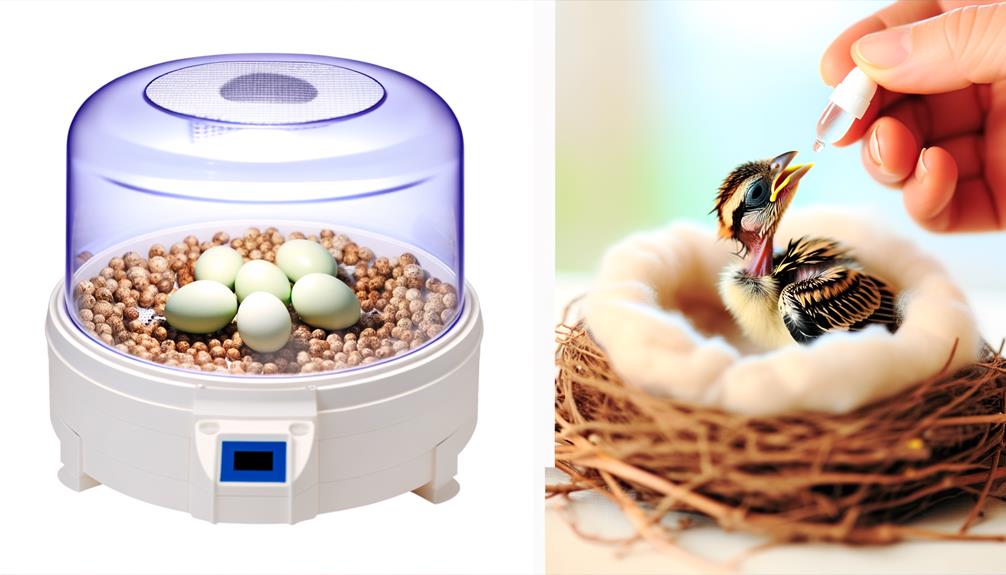
Proper care for newly hatched sparrows involves maintaining ideal temperature, humidity, and providing appropriate nutrition to guarantee their survival and growth. It is critical to make sure that the brooder environment mimics their natural habitat as closely as possible.
Temperature Control: Maintain a stable temperature between 95-97°F (35-36°C) in the brooder for the first week. Gradually decrease by 5°F each week until reaching room temperature.
Humidity Management: Keep the humidity level around 50-60% to prevent dehydration and support healthy respiratory function.
Feeding Protocol: Provide a diet rich in protein, such as a commercial hand-rearing formula, fed every 20-30 minutes for the first week. Gradually reduce feeding frequency as they grow.
Securing these conditions will optimize the hatchlings' development.
Conclusion
To sum up, successful incubation of sparrow eggs at home requires careful attention to equipment selection, accurate incubator setup, and strict maintenance of temperature and humidity levels.
The regular rotation of eggs is necessary to guarantee uniform development, and post-hatching care is essential for the survival of the hatchlings.
What factors could be more essential than a controlled environment and diligent monitoring to replicate the natural conditions needed for sparrow egg incubation?
These considerations are crucial for fostering successful avian development.


